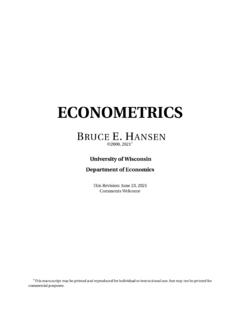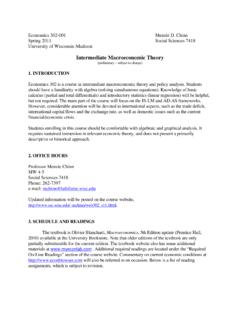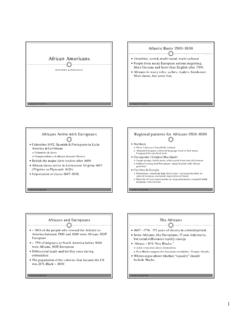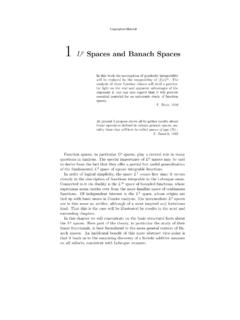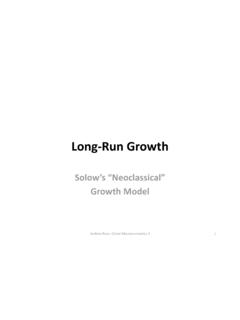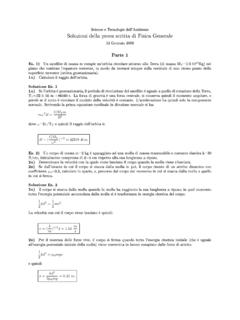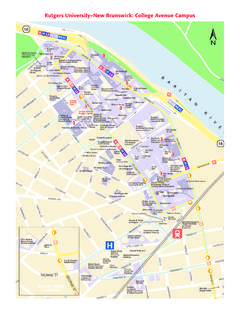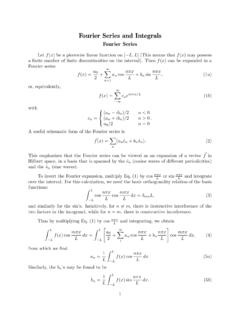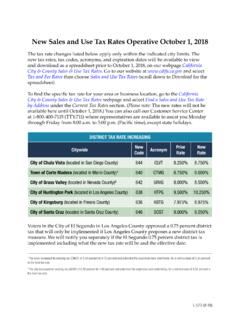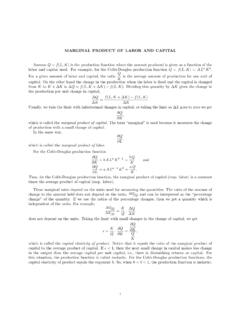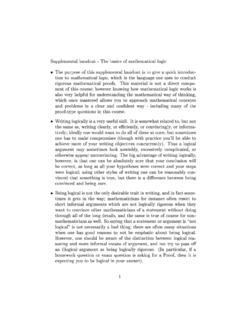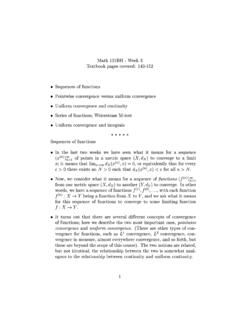Transcription of Production Function: Y = F (L , K) , where F ( ) is the ...
1 Production Function, Average and Marginal Products, Returns to Scale, Change of VariablesProduction Function: links inputs to amont of output. Assume we have 2 inputs: Labor (L) and Capital (K), and we use Y foroutput . Then we write:Y = F (L , K) , where F ( ) is the Production Function. We make a number of assumptions about :(1)Y = L . K(2)Y = L + K(3)Y = L . K1/31/3(4) Y = L . K1/21/2 Average Product and Marginal Product of a Particular InputLabor: Average Product of Labor (APL): Y/ L Marginal Product of Labor (MPL): changes in Y / Changes in L (for small changes) = partial derivative of F(L, K) with respect to : Average Product of Capital (APK): Y/ K Marginal Product of Capital (MPK): changes in Y/ Changes in K (for small changes) = partial derivative of F(L, K) with respect to KReturns to Scale:Percentage of change in Y when we change all inputs in the same Returns to Scale (IRS) :% change in Y > % change in L = % change in KConstant Returns to Scale (CRS) :% change in Y = % change in L = % change in KDecreasing Returns to Scale (DRS).
2 % change in Y < % change in L = % change in KSome Production functions exhibit the same type of returns to scale everywhere (like the 4 examplespresented here), while others don our examples it is easy to find the type of returns to scale by looking at a couple of 1: Y= L . KLK Y= L . K111224 Y IRS339Ex 2: Y= L + KLK Y= L+K112224 Y CRS336Ex. 3 : Y = L . K1/31/3LK Y = L . K1/31/3111882 Y DRS27279Ex. 4: Y = L . K1/21/2LK Y = L . K1/21/2111444 Y CRS999 Change of VariableSometimes it is convenient to make a change of variable in order to reduce the number of variables in ourproblem by one. When the Production function exhibits CRS we can do this very 2: Y= L + KLets divide both sides by L,Y/L = 1 + K/Ldefine two new variables : y= Y/L and k= K/L , theny = 1+ kand we have only 2 variables in our 4: Y = L . K1/21/2 Lets divide both sides by L (or L.)
3 L ),1/21/2Y/L = (L . K / L = (L / L ). ( K / L ) = 1 . (K/L)1/21/2)1/21/21/2 1/21/2define two new variables : y= Y/L and k= K/L , theny = k1/2and we have only 2 variables in our that our new function looks like this:Since,LK k= K/L y= k1/222 1 128 4 2218 9 3



